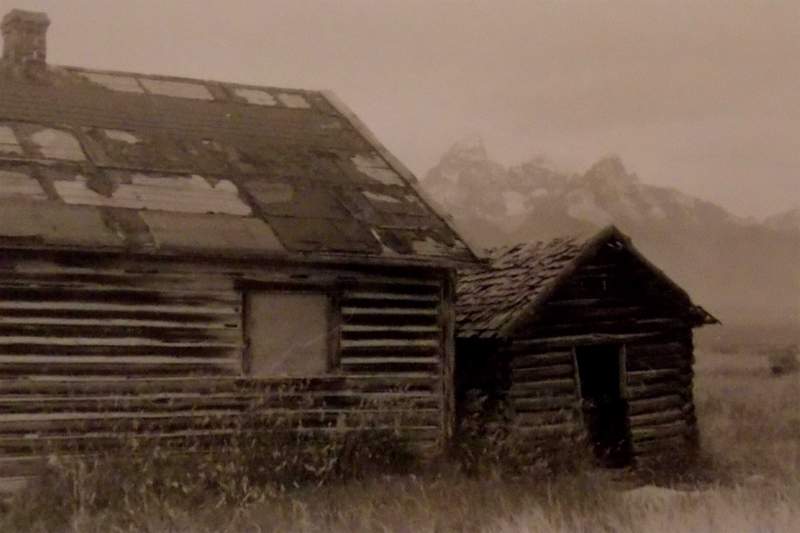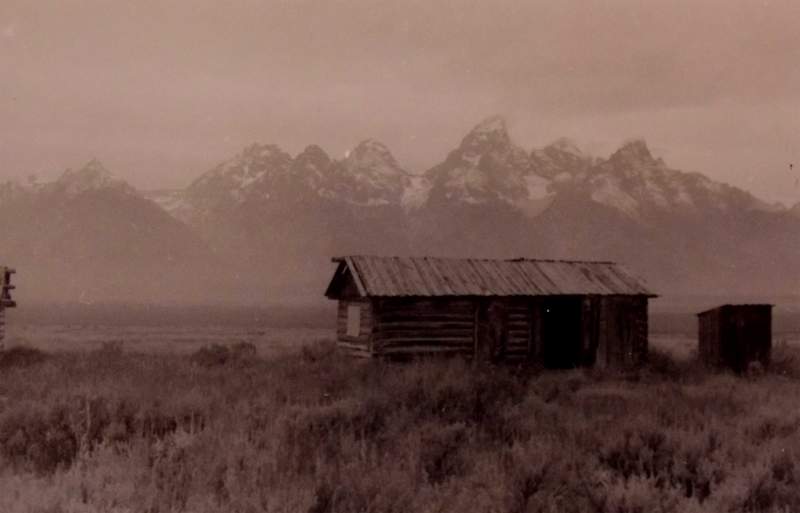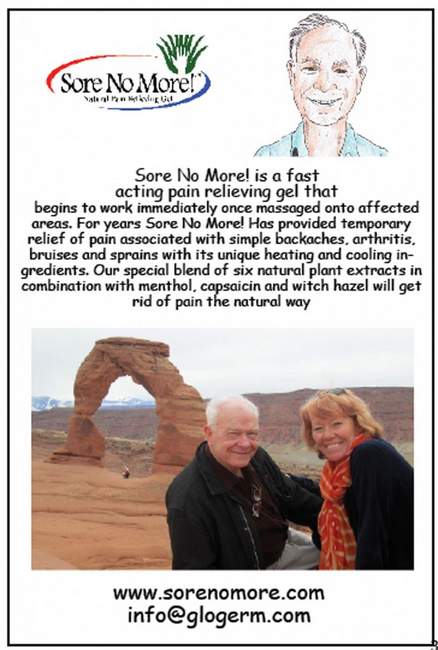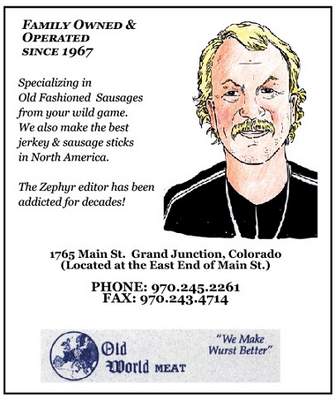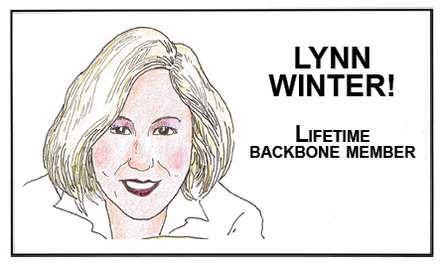I learned early on that I was susceptible to empty houses. The first intimation, a very young kid, wandering north-east of the town of Jackson, coming upon a small hog-notched cabin, roof fallen in, logs weather-beaten to a fine gray gloss. Suddenly the very air felt different. Ghostly? Maybe. I don’t know whether to call it absence or presence. Okay, both. Folks unknown, but they had been here. Who were they? What happened?
I suspect that most of us are apt to get that spooky quiver when coming upon a place once inhabited. Maybe we’ve learned from our culture’s myths and mysticisms. Maybe it’s part of our animal heritage. I don’t have to know.
Later, I learned that early ranch houses in the west were often thrown up in a hurry, winter sweeping in. Did entire families spend a winter in those 140 square foot dwellings, rain and snow melt dripping from leaky roofs? I think that is very likely, but I can’t get factual about it, because there was a practice in the early days to file on a 160 acre homestead, then build a house to prove you were not a speculator; you and your family were there to stay, but you might wait until you could build a better house before actually moving in.
The story goes that big ranchers sometimes enlarged their holdings by ordering their cowboys to build a structure on a quarter section (160 acres), declare it “improved,” then order the structure moved to another place, declare that one improved, and so on. Cowboys’ names could be entered as the homesteaders, then later deeded over to the boss.
A couple of miles outside Blanding, Utah I followed directions, found a clearing at the edge of a narrow canyon. Pop bottles and other signs marked it as a school teen hangout. I stepped out of the pickup and worked my way to the floor of the canyon where a small, slow-moving stream wound its way. I looked up, noticed a regularity at the base of tall cliffs. I climbed, came to broken down adobe walls rooted at the rim of the steep slope, enclosing a deep cliff overhang. There, again, the charge in the air, the wonder. People had lived here, in a shelter not much more spacious than the shelter “Injun Jack” had built out of landfill stuff, at the edge of Jackson’s “dump.” That’s what we called it. “Landfill,” the euphemism, came later when our civilization began to smother under gigantic heaps of garbage and throw-aways. Kids burned down the house that the man we called “Injun Jack” built. Homeless, he built again. The town did nothing. No inquiries, his word against nameless kids. He disappeared. What was his real name? How did he lose out in the competition for place? Where did he go? What kind of man was he?
Who were those ancient canyon people? Where did they come from? What stars did they steer by? Where did they go? Archaeologists have theories. The theories keep changing. I’m still wondering.
On a trail at the STS ranch, I came across the remains of a one-room cabin in the woods. Returning to the ranch house I asked Buster and Frances Estes if anyone had lived there. Oh yes, Haywire Jimmy, and his family, spent a winter there, running a trapline. Frances said that Jimmy picked up the name “Haywire” because he was a bit tetched in the head, but Buster corrected her. “No, Slim, it was because when he had a job he always tied up his lunch with haywire.” (Baling wire; the early hay balers used wire, not twine).
I went back to that fallen-in cabin, tried to imagine a family spending a long winter trapped inder the snow, like bears trying to hibernate. In the early days people did live like that, tolerating each other, surviving. Why? Because there was no choice, that’s why. They’re doing it today too, in single-wide trailers. I imagined the family emerging to take a few whiffs of the first day of spring, a chinook caressing snow with warm breath. The joy of it! And the aftertaste too, knowing that winter wasn’t through with you just yet. Haywire Jimmy, you and yours, I hope you ran a good trapline that winter. No, I can do better than that. A humble salute to the whole haywire family.
Wyoming and Utah, Idaho and Nevada, ranches abandoned. Who were they? What happened? Dairy farms in New York gone bust, sagging barns, wind-ripped roof on the house, blank, staring window spaces, rot in the once proud houses. In the sagebrush wilds of the Big Sandy country, an abandoned house next to a creek and in the creek a wagon wheel crusted by rust. Water slithered past, Wyoming wind touched the tips of sage. I couldn’t help thinking that wheel, upright and well-anchored in creek bottom,. was deliberately placed, a warning perhaps, or a marker: We were here, we tried.
Wells, Nevada. I took a right turn from the early morning traffic, walked north, following memory traces. The old commercial buildings in a long row facing the U.P. railroad and U.S. 40, now a lonely street. No life, no traffic, not a breath of wind, the early sun lighting the false fronts of brick or concrete, the bank with its Ionic columns. Desert colors: brick red, rose red, off-white and shades of tan. Wide sidewalk, weeds as tall as bushes growing from the cracks. Names on the fronts, black weathered to char: S. Quilici and Son. Elite Bar. The Capitol. Hotel. Rooms. Wells Bar and Cafe.Wells Bowl.
Here an entire culture died. This was U.S. 40 when cowpokes rode the range in Ford V8s. Dusty travellers came in from the desert to dredge heavenly soda pop from ice crush. Golden gasoline foamed into glass tank pump tops. Road maps free. Saloon doors opened on delicious dark. Now nighthawks still buzz warm dusk of the new main drag where two casinos wait for night to ripen pale neons. Nighthawks, beaks agape, reap untold wealth. Aging I-80, south of town, hums alone in the soft smell of sage, staying put under the rush, that old song, hurry west to start again, the elsewhere call. Night takes all, mountain ridges go blank against the stars. Mountains and stars, aloof, never did heed our destiny brag, never did preside over our taking of the land.
On furlough, I hitched to northern California, met my dad, Olaus, and we had a great time travelling the west. Olaus was on assignment for the Wilderness Society, meeting people, drumming up enthusiasm. On the way home we drove through northern Nevada, decided to drop in on the abandoned Civilian Conservation Corps camp on the Sheldon Antelope Refuge. We’d been there before, when it was a bustling place run by the U.S.Army. Spent one night there, took in a movie, a DeMille extravaganza, The Crusades in the spacious rec hall. The film broke midway, of course. The young CCC men sat quietly, talking in low tones, waiting for the repair. Took quite a while, but nobody was in any hurry, the nearest town far, far away across miles of desert. I remember only one scene from the movie, King Richard meeting with the Sultan. Richard unsheathed his sword, cut an iron bar in half with a mighty wham. The sultan tossed a gauzy silk into the air, caught it with his scimitar’s edge and it gently fluttered down, in two pieces. Impressive, pure Hollywood.
Well, the war over, Roosevelt’s New Deal in the past, we once again pulled into the camp, walked through the empty streets and buildings, including the company headquarters where we noticed a big stack of tough brown envelopes, their return addresses printed in bold black ink: WAR DEPARTMENT. Olaus hesitated, not wanting to be a thief, but I knew he could use those envelopes to file his continuing output of sketches and clippings. It didn’t take us long to decide. We took them.
Now our war department has a new name: DEFENSE. Or, in journalese, THE PENTAGON. How things do change and stay the same. I mention this visit for a reason: the spookiness wasn’t there. Maybe because we knew the place, had sat on folding chairs for the entire length of a long movie, listened to officers talk and the murmur of young men under military discipline, saved from inner city joblessness. We had walked the grounds that were as dusty and pale as the surrounding desert, which we knew well. Part of our stompin’ grounds, was that it? I think that was it.
I still have some of those big manila envelopes, stuffed with pencil and charcoal drawings, portraits of animals and people, forest scenes, desert scenes, mountains. Relics of a more forthright era.
MARTIN MURIE died on January 28, 2012 but his words will always live on, here in The Zephyr.
Click here to read Jim Stiles’ tribute to Martin Murie in June/July’s Take it or Leave it.
To read the PDF version of this article, click here.
To comment on this article, scroll to the bottom of the page.
Don’t forget the Zephyr ads! All links are hot!


